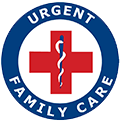A sprain is a stretching or tearing of ligaments, the bands of tissue that connect bones to one another at a joint. A strain, or pulled muscle, is a stretching or tearing of a tendon or muscle tissue.
Causes of a strain or sprain
Any sudden or unaccustomed stress on joints or muscles can cause a sprain or strain. Common causes are:
- Falling
- Lifting a heavy object, or doing a lot of lifting when you are not used to it, such as moving boxes
- Overexerting yourself playing an unfamiliar sport
- Putting too much stress on a joint, or repeating the same motion excessively, such as when you play tennis or golf, or pitch a baseball
- Knocking a joint out of position and overstretching the supporting ligaments or muscles
If you are overweight, inactive, or in poor physical condition, you are more susceptible to sprains and strains.
Symptoms of a strain or sprain
Symptoms of a strain include:
- Redness and swelling
- Moderate to severe pain
- Bruising
- Difficulty putting weight on the joint or moving it
Treatment for a sprain or strain
Most strains and sprains heal themselves in time, if you rest the affected joint or muscles. Severe cases sometimes require surgery.
Initial treatment for a strain or sprain is usually rest, ice, compression and elevation (RICE). RICE therapy is most effective if applied right away and continued for the first 24 – 27 hours, until swelling begins to go down.
- Apply ice packs for 10 minutes, then remove then for 20 -30 minutes and repeat. Do this over the first 3 days after the injury. Do not put ice directly on the skin. In an emergency, a bag of frozen vegetables can be used as an ice pack.
- Wrap the area with an elastic bandage or elastic sleeve, available in the drug store, to prevent swelling.
- Keep the injured area elevated above the level of the heart, to prevent fluid from accumulating there.
- Take an over-the counter pain reliever if needed for the first 1-2 days. (If pain persists, see a doctor.)
A doctor might recommend immobilizing the area with a brace, cast, or splint while it heals. At Urgent Family Care in Knoxville we are here to help.
When to see a doctor for a sprain or strain
See a doctor if any of the following occur:
- You cannot walk more than a few steps or cannot move the affected joint.
- You experience numbness around the sprain.
- Red streaks are radiating from the affected area.
- You injure the same area repeatedly.
- Symptoms get worse instead of better after 2 -3 days.
- You cannot put any weight at all on the affected joint.
- You suspect a fracture or a more severe injury.
Your doctor might do an X-ray or an MRI to evaluate the seriousness of the injury, and immobilize the area with a cast or brace.
Get treatment for a strain or sprain now at Urgent Family Care in Knoxville.
For more information on sprains and strains, see:
DISCLAIMER: The link above is an independent website in no way connected with Urgent Family Care. The information provided is for educational purposes only, and is not a substitute for professional medical advice, diagnosis, or treatment. Consult your doctor you have or suspect you may have a health problem. Always follow your doctor’s recommendations regarding your specific medical questions, treatments, therapies, and other needs.
